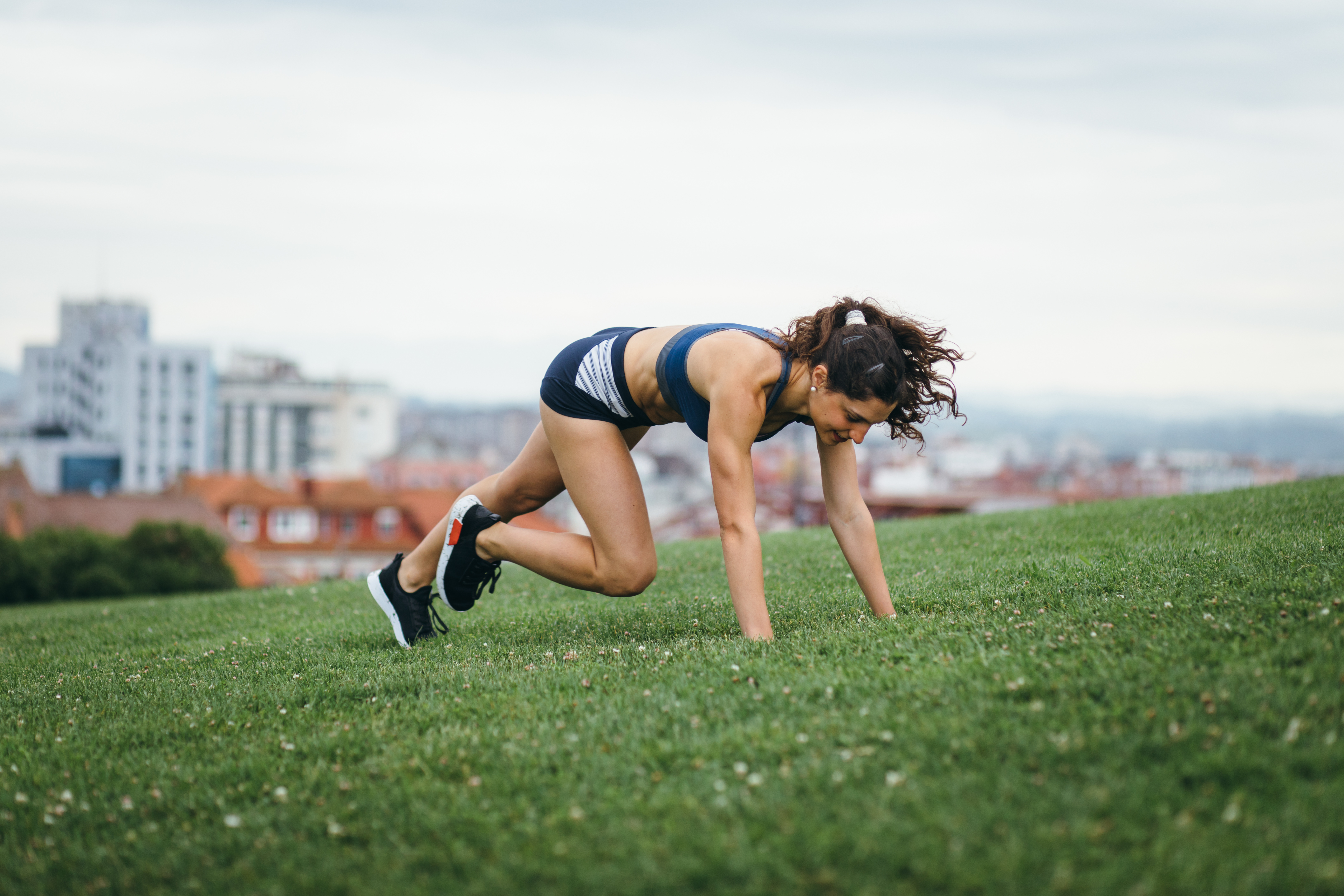
Home is where the fitness action is, and HIIT training is a way to get a home workout quickly. If you’re not familiar with the concept, HIIT stands for high-intensity interval training. What’s so special about it? A high-intensity interval workout is one of the best ways to get a full-body workout without equipment or much space. It’s versatile too. HIIT training enhances both aerobic and anaerobic fitness due to the intense nature of this workout. It helps with fat loss too since vigorous exercise creates an after-burn that promotes fat burning for hours after the workout is over.
Research even suggests high-intensity training is more effective for reducing unhealthy visceral fat, the kind that accumulates around your waistline and tummy and is strongly linked with health problems, like type 2 diabetes and cardiovascular disease.
What do you need to get started? Very little. An exercise mat will some of the exercises more comfortable. It’s also helpful to have a few sturdy benches or risers for certain exercises, although these aren’t necessary when you first start out. Be sure you’re wearing a good, supportive pair of exercise shoes!
With HIIT training, you’ll work out at an intensity that makes it difficult to talk in complete sentences. If you can speak easily when you carry out these exercises, you’re not working hard enough. High-intensity interval training trades duration for intensity.
To structure a bodyweight HIIT workout, choose two exercises from the list below. These are cardio exercises designed to boost your heart rate. You’ll alternate these exercises with bodyweight exercises that build strength and muscle endurance in a back-and-forth sequence:
Cardio Movements
•Burpees
•Mountain climbers
•Jump rope or shadow jump rope
•Squat jumps or box jumps
•Jumping jacks
•Lateral jumps
Decide whether you want to do an upper or lower body HIIT routine. For an upper body HIIT workout, choose two exercises from the upper body bodyweight exercises below:
Upper Body Exercises
•Push-ups or push-up variations
•Pull-ups
•Triceps dips
For low body HIIT, select two exercises from the lower body column. For abs, two from the abdominal exercises listed:
Lower Body Exercises
•Bodyweight squats
•Bodyweight lunges
•Glute Bridges
•Hip thrusts
•Calf raises
•Step-ups onto a platform
For an ab and back HIIT workout, choose two from the list below:
Abdominal and Back Exercises
•Planks and plank variations
•Abdominal crunches and variations
•Hanging knee raises
•Leg lifts
•Prone back extensions
After selecting your exercises, warm up for 5 minutes by doing dynamic movements, like leg and arm swings, high knees, butt kickers, jogging in place, and arm punches. No static stretching at this stage.
Then use the sequence below to structure your workout. Do the exercises in order, only resting long enough to set up for the next exercise:
•First cardio exercise for 30 seconds
•First bodyweight exercise for 1 minute. You made need to rest briefly if you can’t do a minute without stopping.
•Second cardio movement for 30 seconds
•Second bodyweight exercise for 1 minute
Then, rest for a minute and repeat 5 times. Don’t forget to do a 5 to 10-minute cool down beforehand. During the cool down, do a light version of the exercises you performed during the warm-up. Conclude the work-up with gentle static stretches to lengthen the muscles you just worked.
The whole HIIT routine will only take around 20 to 30 minutes. Yet, it’s challenging due to the lack of rest between exercises. If one minute of a bodyweight exercise is too challenging, start with 30 seconds and gradually work your way up to a full minute. As you get stronger, do more advanced variations of the exercises listed. For example, there are lots of push-up variations that are more challenging than a standard push-up. Tackle some of these once you’re ready.
If you’d like to focus exclusively on cardio-inspired exercise, select four exercises from the cardio list and cycle through the exercises in the same manner.
HIIT Training Is Customizable
As you can see, you can easily design your own HIIT workout that targets the upper body, lower body, abs, or works mainly cardio using the workout structure above. Change the exercises regularly for variety and do different variations of the basic exercises as you advance your training and become stronger and develop greater aerobic fitness.
Don’t Do HIIT Workouts Every Day
High-intensity interval training isn’t meant to be done every day. If you’re doing them correctly, they should be exhausting enough that you don’t feel like doing them more than two to three times per week. You need a minimum of 24 hours of rest between sessions and if you did a particularly intense session 48 hours or more. So, give yourself a rest day or a low-intensity day between HIIT sessions.
Conclusion
High-intensity interval training is one of the most time-efficient ways to improve your fitness level and build greater muscle strength and endurance. Plus, they’re relatively quick and never boring. Take advantage of what this type of workout offers!
References:
Metabolic Effects of HIIT Training. Len Kravitz, Ph.D.
HIIT vs Continuous Endurance Training: Battle of the Aerobic Titans. Micah Zuhl, Ph.D. and Len Kravitz, Ph.D.
Sports Med 2002; 32 (1): 53-73. 0112-1642/02/0001-0053
